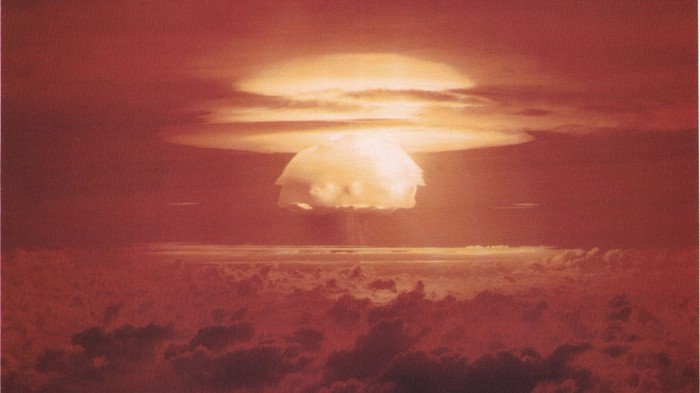Nuclear War Simulator, launching in 2020, lets the user design a plausible doomsday scenario and study the humanitarian impact. Just don’t call it a “game.”
ARTICLE BY: MATTHEW GAULT | vice.com
Full scale global nuclear war is hard to fathom. One nuclear launch could set off a chain of events that would radically alter life on the planet. Millions would die in the initial blasts and millions more would starve as the climate changed and our way of life withered. Just how are we supposed to reckon with the possibility of such wide-scale destruction?

Programs like NUKEMAP let you plot individual bombs and video games like Defcon simulate the war, but neither comes close to rendering the devastation a doomsday scenario would bring. That’s what Nuclear War Simulator (NWS) is for.
The NWS is a simulator launching in early 2020 that is designed to educate people about the horrors of nuclear war and created by engineer Ivan Stepanov. In NWS, users can set up their own full scale nuclear war—including designing warheads—launch nukes across the planet, and study the humanitarian impact on a Google Earth-style map off the planet. If you ever wanted to know how many millions would die in an all out nuclear war between Russia and the United States, or what the radiation map would look like if Britain launched its submarine nukes at Moscow, NWS is for you. Just don’t call it a “game.”
“[It is a realistic interactive simulation and visualisation for nuclear conflicts with a focus on humanitarian impact,” Stepanov told Motherboard. “It is technically not a game as there is no goal and no reward for nuking everybody. Instead, it is an interactive educational sandbox where you have the freedom to setup and replay any conflict scenario you want.”
In NWS, you can zoom out and watch things unfold from the position of a satellite or zoom in and watch the intimate impact of nuclear balefire on your home town. The simulation covers everything from the amount of smoke from burning cities to loss of life from fires, radiation, and starvation.
Stepanov wants people to remember what makes these weapons so horrifying. “The goal of this project is to create an interactive tool that we can use to visualize large-scale nuclear conflict and make it as realistic as possible in order to raise awareness of the dangers that nuclear weapons present to our society,” he said.
Nuclear War Simulator started life as a Defcon mod. Defcon is a terrifying video game where the player takes control of a global superpower during a nuclear conflict. The only way to win is not to play. But Stepanov couldn’t make his simulator work as a mod, he said, since there was too much he wanted to model. So, he took cues from NUKEMAP and decided to release NWS as a standalone simulator.
“I decided to introduce a detailed humanitarian impact model, like the one used in Alex Wellerstein’s NUKEMAP and to integrate realistic weapon systems to make a tool that can be used to tell a credible story of a nuclear conflict,” Stepanov said.
Stepanov is an engineer in Germany who works with Lidar sensors to teach self-driving cars. Modeling nuclear war is his passion, and it started early. “I grew up in Semipalatinsk, just 150 km away from the test site where the Soviet Union was testing most of its nuclear weapons,” he said. As a kid, Stepanov thought nukes were just really cool gigantic bombs. At twelve, he started collecting newspaper articles about the health problems of people living near the test site. It changed his view of the bomb forever.
“Later, when studying physics I became more aware of the fact that we live in an interconnected world relying greatly on fragile technology, that a nuclear war would disrupt our supply chains and lead to a nuclear winter,” he said.
NWS comes at a critical time in the history of nuclear brinkmanship. The Intermediate-Range Nuclear Forces Treaty—which limited the range of nuclear weapons between Russia and the United States—is dead. Diplomacy between North Korea and the U.S. isn’t going well. New START, which limited the amount of warheads, will probably expire despite Moscow begging Washington to renew it.
“The consequences of such a conflict would be catastrophic and represent in my opinion the single biggest threat to human civilisation today,” Stepanov said. “I hope that this simulation will contribute to public awareness of the threat of nuclear weapons and generate some pressure on the politicians to make the right decisions.”
